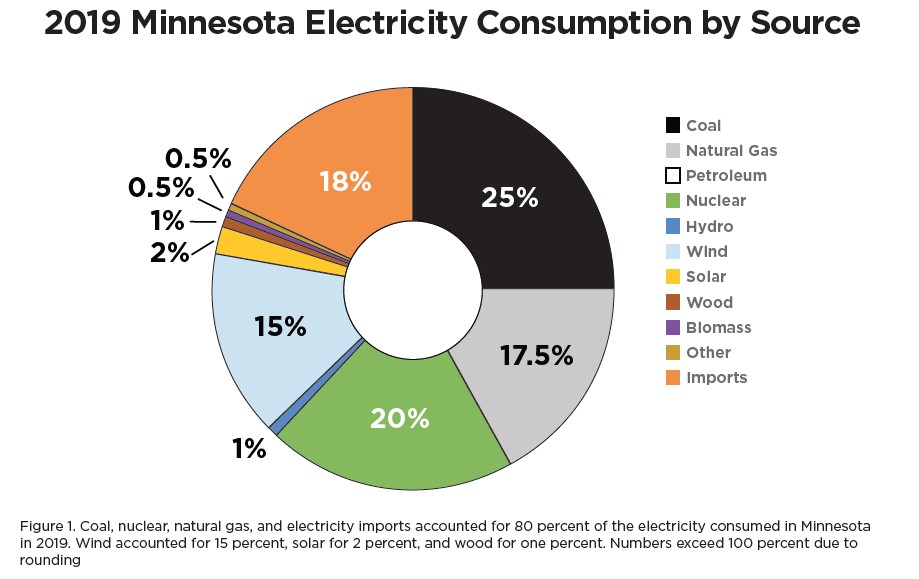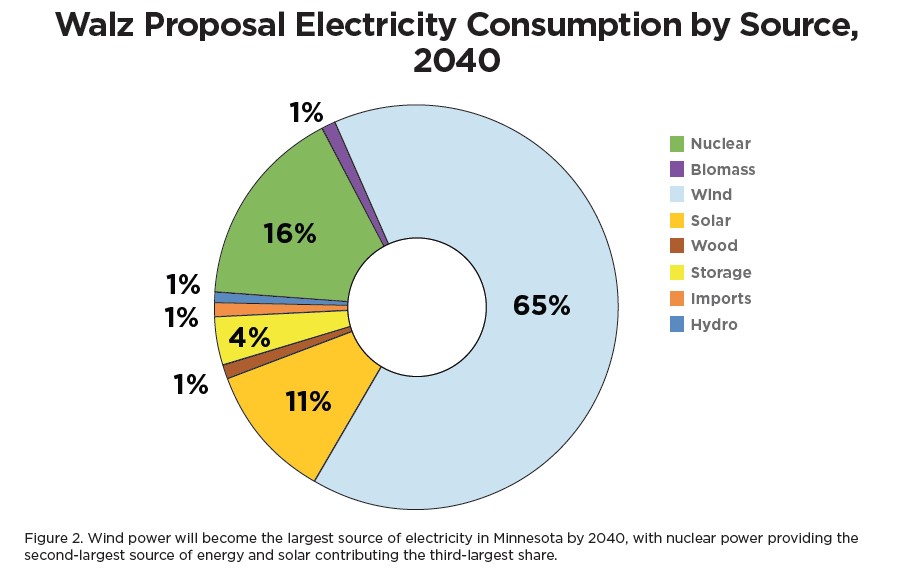Part 1: How the Walz Proposal would radically alter our electric grid
This article is the first in a series discussing the findings of American Experiment’s latest report, The High Cost of 100 Percent Carbon-Free Electricity: Governor Walz’s Proposal Would Cost Minnesota $313 Billion Through 2050 and Lead to Blackouts.
Minnesota Governor Tim Walz is proposing an extreme reorganization of Minnesota’s electric grid that would force our state to eliminate greenhouse gas emissions from the electricity sector by 2040. This timeline is even more aggressive than California’s law, which would phase out carbon dioxide emissions by 2045.
This is bad news because California is already on the brink of blackouts. If we enact the same policies as California, we will get the same results: expensive and unreliable electricity.
Minnesota’s electricity mix before the Walz Proposal
In 2019, Minnesota derived 24.7 percent of its electricity from coal, 19.5 percent from nuclear,
17.5 percent from natural gas, 15.2 percent from wind, 11 percent from imports from Canada
(mostly hydroelectricity), 7 percent from imports of electricity from other states (mostly imports of coal and wind-generated electricity in North Dakota), 1.7 percent from solar, 1.5 percent from hydroelectric, and 1.2 percent from wood.

Minnesota’s electricity mix after the Walz Proposal
Under the Walz Proposal, this electricity mix would be required to shift dramatically.
In our analysis, we assumed the Walz Proposal would allow Xcel Energy to retain and
relicense its existing nuclear power plants and that electricity generated from these plants would be counted as carbon-free under the 100 percent carbon-free mandate.
Keeping the existing nuclear plants online is an incredibly charitable assumption in the Walz Proposal because it provides 1,600 megawatts (MW) of reliable electricity capacity that would be incredibly expensive to replace.
No new nuclear power facilities would be built under the Walz Proposal because under current Minnesota law, it is illegal to build them. No carbon capture or sequestration would be used in this scenario, either, because Governor Walz is pushing for Minnesota’s electricity to come from 100 percent renewable energy by 2040.
To achieve 100 percent carbon-free electricity by 2040, all utility companies will be required to replace electricity currently generated with coal, natural gas, and oil with qualifying
renewable energy sources such as wind turbines, solar panels, and battery storage facilities by 2040.
Under the Walz Proposal, 65 percent of Minnesota’s electricity would come from wind,
16 percent would come from existing nuclear plants, 11 percent would come from solar, 4
percent would be supplied by battery storage, and hydro, wood, and biomass would each
contribute one percent to the state’s electricity supply. None of the state’s electricity would
come from coal, natural gas, or oil.

The graph below shows the annual make-up of Minnesota’s electric grid under the Walz Proposal. Coal and natural gas generation falls from 42.5 percent of Minnesota’s electricity supply to zero by 2040, while wind and solar generation soar from 15 percent and 2 percent, respectively, to 65 percent and 11 percent, respectively. Battery storage accounts for 4 percent of the electricity supply.

Supplying enough electricity to meet electricity demand for every hour of the year using wind, solar, and battery storage would require an enormous buildout of wind turbines, solar panels, and battery storage facilities, which we will discuss in tomorrow’s article.